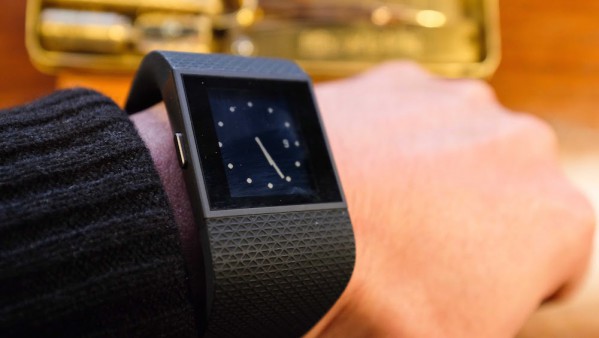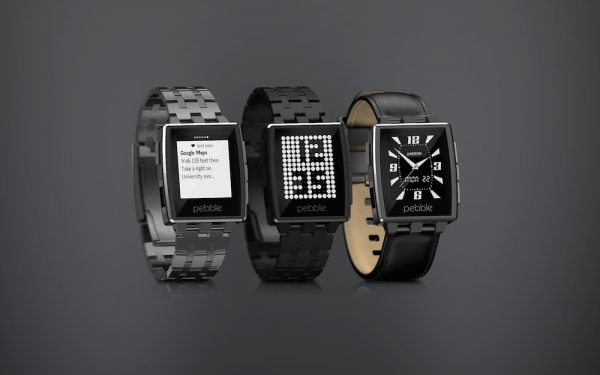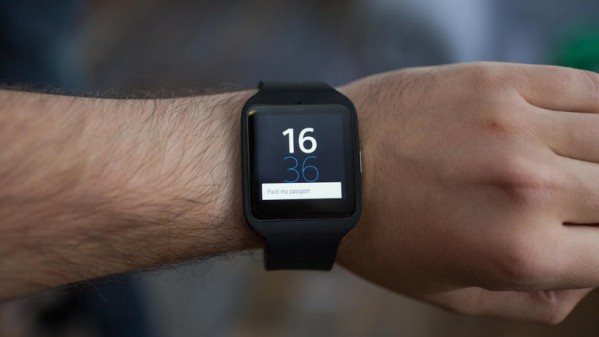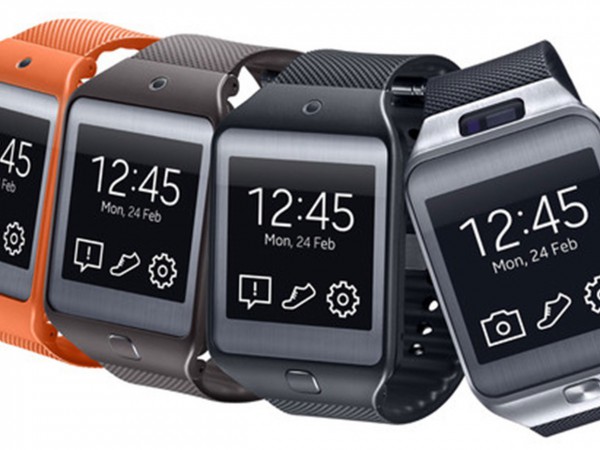With the Apple Watch dominating the tech news world, not to mention causing excited Apple zealots to basically go insane, we thought we’d look at some of the other tech out there, and see what else the wearable world has to offer (hopefully for less than $449.00)
1. The Moto 360
The Moto 360 is the flagship watch for Android. Released in September last year, it made some waves by being the first round smartwatch. Paired with its leather strap, it’s sold itself as a smartwatch that looks like a real watch, which it does exceptionally well. Granted, since then other companies have come out with round ones too like LG, but the Moto 360 was first.
The Moto 360 runs Android Wear as their OS and, like virtually every single other watch on the market, is designed to run in tandem with your phone. It comes equipped with all your basic Google Apps, including Maps, Google Keep, Music, and Fit, plus the Google App, which is their voice activation software (‘ok google!’). You can also add more apps from the ever-expanding world of Android Wear.
It also includes a heart rate monitor, a pedometer, and syncs all your phone notifications.
Rolling in at a cool
$279.00, it’ll set you back a little more than other options, with the trade-off being it’s superbly well designed and looks great.
2. The Fitbit Surge
 The Fitbit Surge
The Fitbit Surge is the “Fitness Super Watch.” If that doesn’t entice you, then we don’t know what will. We included the Surge because it offers a nice balance between fitness tracker and functional notifications that you’d want, without all the fluff that a lot of other smart watches have.
Obviously, their core USP is their fitness functionality. This includes features like:
- GPS, elevation, distance, and mapping
- Automatic and continues heartrate monitor
- Calorie counting
- Pedometer
- Sleep tracking
To really hit home their super claim, the Surge runs with a huge food database to log what you eat. Also, their software is compatible with both Android and iOS.
What makes it ‘surge’ into smartwatch territory though is that you can also get text and call notifications and well as the ability to change your music on the go. Finally – and this is a big plus – the Fitbit’s battery lasts astronomically longer than other smart watches out there. They claim seven full days,
most reviews say around 5. Still, the
Moto 360, for example, only makes it to about 12 hours.
If staying healthy is a top priority for you but a smartwatch is on your radar, then the Fitbit Surge is a great option (also, according to Endgadget, the
Microsoft Band is another good option.)
The Surge retails for $250.00.
3. The Pebble Steel
 Pebble
Pebble made a name for itself in 2013 by crowdsourcing their original watch, the Pebble. The Steel is the Pebble’s larger (and classier) older brother.
Pebble runs a little differently from other smart watches out there. For starters, it uses an e-paper display, which is bit like e-ink on a Kindle. It means that the battery life is more in the ballpark of the Surge than with the rest of the smart watch pack. Second, the Pebble doesn’t quite integrate into the App Store of the Play Store. Instead, you download the Pebble app, which then in turn contains all the apps for your watch from third parties. It’s called the
Pebble appstore, and it’s really an app store within the App Store.
And while you might think this is absurd, it’s actually worked out pretty nicely. They’ve gotten enough third party apps on board to have most of the functionality you’d want, so the end user experience isn’t really affected.
Oh, and it’s fully waterproof so you can shower and swim with it, a major plus over most of the other smart watches.
In addition to all that, the Steel does a good job of looking like a watch instead of a hulking piece of tech, plus you get all the boilerplate smart watch functionality
like notifications, alarm clocks, and a pedometer. And with the apps in the Pebble appstore, you can tailor it to your needs (for example, a weather app).
All for a mere $199.
4. Sony SmartWatch 3

The
SmartWatch 3 is part of the next generation of SmartWatches. Thus far, we’ve tended to stray into the more simplistic markets, with the Surge and the Steel, but the SmartWatch 3 is really a heavyweight. It runs Google Wear (same as the Moto 360) but includes more hardware features, like GPS, NFC, and WiFi. Oh and the normal Wear stuff like voice communication,
notifications, reminders, weather, and travel times for commuters.
One thing we liked about the SW3 was its versatility. It’s got enough features to be a robust smart watch, but with its rubber wrist band, 4GB internal storage, and GPS tracker, it makes a pretty decent fitness tracker as well, perfect for if you don’t want to take your phone on a run.
Granted, a dedicated fitness tracker (like something Garmin would make) would do the same job but better, but as add-on to a complete smart watch package? We’re pretty into that. The SmartWatch 3 retails for $279.00 so it’s getting up there in price, but like we said, the hardware it’s packing have future proofed it at least a little, so that
as Android Wear develops, the SW3 will appreciate.
5. Samsung Gear 2

It would be impossible to talk about alternatives to the
Apple Watch without talking about Samsung. The Gear 2 is the biggest watch in the
Gear family, along with smaller more specialized options like the Gear Fit.
The Gear 2 runs on Samsung’s own OS, Tizen, which like any software has its pros and cons. You’re probably going to be less familiar with it, and like any OS that isn’t Apple or Android, there’s going to be an app problem.
However, Tizen is going to be better for the Gear 2 and provide a better user experience because it was designed specifically for the Gear 2. It might take a while, but the end experience might be worth the learning curve.
Aside from the OS situation, the Gear 2 offers everything that your average wearable consumer would want – heart rate monitor, pedometer, notifications, voice call – the usual stuff. And as for the battery life, it’ll last about 3 days, which isn’t bad for this type of device.
One thing that the Gear 2 truly stands apart from the pack with is its camera. It has a tiny 2-megapixel camera in it, which can also shoot 720p video. And while this might be more gimmick than use, it’s still pretty cool.
Pricewise, the Gear 2 does sit higher up on the totem pole, retailing for $339.
Conclusion
The Apple Watch, we can safely assume, is going to be the wearable to beat in the coming years. It’ll set the bar, the same way the iPad did for tablets and the iPhone did for smartphones. But until they come down a little in price (the most expensive one is something ridiculous like $17K) there are plenty of alternatives out there, some of which are going things that the Apple watch can only dream of.
